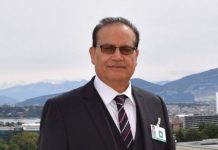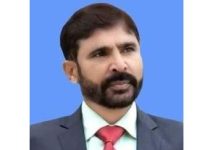FATA is unique; being part of an independent country, it’s still semi-autonomous region with century’s old social and legal system. It is the least developed and disenfranchised part of Pakistan. Historically, the region has always been considered as buffer state due to difficult terrain and strong tribes who never compromised their self-respect and allowed any foreign interventions. Moreover, the prolonged state neglect, socio-economic disparity, underdevelopment, fragile law and order situation, coupled with poor governance all resulted in spread of militancy in the region.
Prolonged conflict in FATA has devastating effects for the country as militancy has resulted in critical situations including socio-economic problems, poverty, drug trafficking, terrorism, violation of human rights, migrants, and IDPs. Hence, in order to rid the Tribal Areas of militancy, the government formed a three point strategy including political, military and development. The socio-political transformation, development, and rehabilitation after the military operations are necessary.
The term ‘rehabilitation’ requires explanation, description, and definition. The term ‘rehabilitation’ is not used in the ‘criminal justice’ sense as a balance to punishment, but to propose a generative forging of new life in FATA out of the ruins of the old. In other words, rehabilitation, like relief, becomes a repeated feature or permanent condition for many communities in the world.
While handling post-conflict situation, it is essential to give much attention on rebuilding socio-economic situations, strengthening civil administration, enhance democratic governance and its capacity building whilst conducting confidence building and stabilization measures (CBSM) to facilitate reforms, establish democracy, to reintegrate the social order and restore the law and order. The post-conflict rehabilitation phase is a critical phase and therefore tactfully handling is essential to assure its efficacy. Further the stability of the conflict-prone region depends on the effectiveness of initiatives and the methods used during the rehabilitation and development phase.
Following are the initiatives and approaches of post-conflict rehabilitation process in FATA that need to be considered for an effective rehabilitation process and ensuring peace and stability in the FATA region.
a) Democratic Institution Building in FATA
The purpose of rehabilitation program is to restore peace and stability in the given areas. Building effective and resourceful democratic institutions are vital and are given preference in the rehabilitation approaches. The institutions including defence, police, judicial and other relevant sectors are given priority in the post-conflict rehabilitation process. Hence, establishing effective democratic institutions as a rehabilitation initiative in the conflict-prone region like FATA is necessary.
Furthermore, it is paramount to have viable judicial system in FATA and FCR needs to be abolished. According to International Crisis Group Report, “Pakistan: Countering Militancy in FATA” (2009), to strengthen the judicial system, capacity building of authorities involved including justices, advocates, and lawyers is necessary. Hiring local people of FATA in police and their adequate training is vital to build state confidence in FATA.
b) FATA Confidence Building and Stabilization Measures (CBSM)
The Confidence building and stabilization measures (CBSM) actually are practice to handle border issues and is engrossed with lots of initiatives. CBSM in case of FATA will focus on elevating and the developing this marginalized and ignored part of Pakistan. For that reason CBSMs are required to offer equal opportunities especially in public administration, development, education, and the democratic governance. Hence effective lawmaking body has to be established to make sure its efficacy.
Development of an adequate education sector is necessary to provide basic support including institutions, qualified teachers and ample infrastructure at both primary and secondary levels of education including equal opportunities for both male and female. It is also essential to develop infrastructure in Tribal Areas such as establishing civil administration, road network, electricity, water supply whilst taking necessary steps to encourage private sector investment with the intention of supporting tribal people. In addition, strategic planning at all levels is important to developed trust and to win hearts and minds of local people. Further, educating the local people through vocational trainings, establishing local market, strengthening their capabilities, and introducing finance and business schemes would result in socio-economic uplifting of FATA.
c) FATA: Political Enfranchisement
Democratization is a long term process which involves a series of activities that adds to establishing democracy whilst pave the way to sustainable peace and stability of the country. Besides that, it is also essential to ensure that institutions are accessible at every level in the society as it would run with positive contributions for a comprehensive and sustainable democratic system in the country.
Political enfranchisement is of huge importance. To establish writ of government and peace in the FATA region, political disenfranchisement should be ended by either merging FATA in KP or establishing it as a separate province. However, this is only doable by introducing full provincial and constitutional rights in FATA, giving FATA in the executive control of KP and with an adequate representation in the provincial and national assembly. This could be possible through consensus and consultation involving all the stakeholders, including tribesmen and women who would play a major part in the rehabilitation process.
The integration of FATA is now crucial for the stability of state; introducing modern political and electoral system, empowering the people, representation in provincial and national assemblies, and reforms would lessen the state tensions.
d) FATA’s Economic Development
Economic development plays a vital role to prevent future conflict situations. In addition, economic development and stability can have constructive impact on the socio-economic and political aspects including the refurbishment of infrastructure. With regard to FATA’s economic development, the Government of Pakistan after an inclusive consultative process at the grass-root level has framed a long-term and sustainable development plan (2006-15) with a cost of U.S. $2.06 billion. The main objectives of the Sustainable Development Plan (SDP) 2006-2015 were as follows:
1) “Improving institutional and financial capacities to support a scaling-up of development initiatives;
2) Accelerating social and economic development of the FATA through pro-poor strategies;
3) Participatory and gender sensitive policies and development strategies to bring it into the national mainstream;
4) Manage and maintain ecological and subsistence support system for economic uplift of the area; and
5) Promoting a just, peaceful and equitable society”.
Economic uplifting not only reduces the conflict but also built the confidence of the society in the state government, and hence results in progress of not only the target society but also the country.
e) Repatriation of Internally Displaced Persons (IDPs)
Conflict situation also results in massive internal displacements, according to FATA Secretariat Peshawar Report “Cost of Conflict in FATA” (2009), repatriation of IDPs, restitution for housing, lands and properties affected by military operations and conflict is crucial to ensure sustainable reintegration. Further, formation of standing committees at community and agency levels with powerful communication mechanisms that would facilitate policy formation and strengthen rehabilitation efforts by identifying and discussing issues.
f) Disarmament in FATA
Disarmament is compulsory as huge bulk of weaponry would be available after conflict. It would include the collection of small arms, ammunition, explosives, light and heavy weapons of militants, and tribesmen, record keeping through documentation, and to control and dispose of the weapons. The armed culture in FATA should be limit to avoid future conflict. A detail plan can be designed by involving important institutions to monitor the indicators of arms proliferation, to stop the illegal small arms trade, and introduce new policies and laws to counter proliferation of small arms.
g) Ensuring Border Security
Border with Afghanistan needs to be secured. Cross border movement, illicit drug trade, human trafficking, terrorist and militants movements across the border needs careful watch and control in order to make sure the rehabilitation and development process. Lord Curzon defined frontiers as “the chief anxiety….They are moreover the razor’s edge on which hang suspended the modern issues of war or peace, of life or death to nation”. Without managing the borders, rehabilitation measures would not turn productive.
h) Post-Conflict Rehabilitation: Civil-Military Interaction in FATA
The civil-military interaction (CMI) in the post-conflict rehabilitation process is crucial to make it effective. In the first phase immediately after the military operation, the main priorities are to ensure security and provide humanitarian assistance. After that, the duty is to reinforce the government and civil society and then finally to assist structural developments.
Preferably, a subsidiary role in rehabilitation process is played by the military, which means that the military ‘should only take action outside its core military mandate until these tasks can be taken over by civilian actors’. Sometimes the military works with the humanitarian organizations if required. This is called Civil-Military Cooperation (CIMIC), “the task of CIMIC is to identify the diverse interests and intentions of different civilian actors (governmental and non-governmental organizations) and to coordinate and harmonize them where possible”. The three main functions of CIMIC are as follows:
1) “Support to the armed forces, for instance, through support for military planning and operations,
2) Support to the civil environment, for instance, through information and advice for civil authorities and agencies, and
3) Civil-Military liaison”.
After the successful completion of first phase which is military operations in the FATA region, the area will be handed over to civilian authorities for the next phase i.e. reconstruction and rehabilitation, but the civilian government and humanitarian organizations where needs calls military assistance. The primary aim of the state should be to rehabilitate the area in it’s fullest. Not only it requires the rehabilitation of militants or terrorists like the state did in Swat but also the rehabilitation of the entire area and its locals. State needs to formulate policies, rules and regulations which could be implemented in their entirety to ensure peace and development in the region. FATA at this moment demands social, political, economic and security reforms. The inculcation of these reforms should be in the constitution so that they are implemented with accountability. Such reforms should include developmental plans, employment opportunities, social reintegration, political openness and welfare and security of the citizens.











